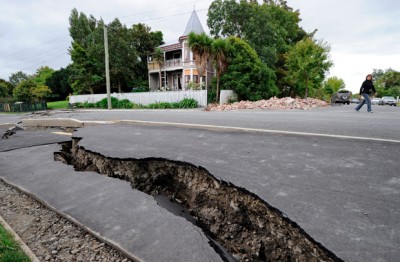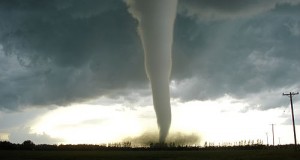 The New Madrid fault line remains very active and could prompt “future large earthquakes,” according to a new study by the US Geological Survey.
The New Madrid fault line remains very active and could prompt “future large earthquakes,” according to a new study by the US Geological Survey.
The most powerful earthquakes to ever occur in America happened along the New Madrid fault line, which cuts through the country’s midsection, in 1811 and 1812 and even caused the Mississippi River to run backwards. The earthquake was reportedly felt by people more than 1,000 mile away from the epicenter. It rang church bells in Boston.
The US Geological Survey (USGS) New Madrid fault zone report was recently published in the journal Science.
Researchers and scientists have been debating the hazard level posed by the fault line for many years. The New Madrid spans approximately 150 miles and runs through parts of Mississippi, Indiana, Illinois, Kentucky, Arkansas, Tennessee, and Missouri.
Said seismologist Susah Hough:
Our new results tell us that something is going on there, and therefore a repeat of the 1811-1812 sequence is quite possible.
The USGS is predicting that there is about a 10 percent chance of another massive earthquake occurring along the fault zone in the next 50 years. Seismologist Arthur Frankel, who was not involved in the study, deemed the USGS result plausible. His recent research utilizing GPS readings reportedly indicate “significant movement of land” along the fault zone during the past 10 years that could prompt dangerous earthquakes across the middle of the United States.
The 1811 and 1812 earthquakes along the New Madrid fault line measured in magnitudes from 7.5 to 7.7 around the central Mississippi River Valley. Farmland disappeared into the swamps, boats capsized, and chimneys shook and fell to the ground. There were not mass casualties during the powerful New Madrid earthquakes due to the low population of the area. Sparsely inhabited areas are not the case now; the death toll should such a powerful natural disaster occur along the fault zone would be exponentially higher.
The New Madrid fault zone, unlike the San Andreas in California, does not exist along shifting tectonic plates. This fault is perhaps the least understood by scientists because it is located far away from plate boundaries in the middle of North America. Some researchers blame the continuing quake activity along the fault zone on ongoing aftershocks stemming from the early 1800s earthquakes.
The New Madrid Seismic Zone is a grouping of ancient faults that are now hidden beneath the thick mud of the Mississippi River.
According to Hough and USGS study lead author Morgan Page, if the past 200 years of small earthquakes were indeed aftershocks, then their “modeling predictions” should have also experienced more than 130 6.0 magnitude earthquakes, as well. Following that same line of data, such earthquakes would have been felt more strongly and further in distance than the 2011 Virginia earthquake – but nothing on that level has been recorded. Page therefore believes that the small earthquakes along the New Madrid fault line are happening independently of the 1800s seismic activity. “200 years is too long for an aftershock sequence. Instead, we think stress is being built up now,” Page said.
What do you think about the New Madrid fault zone report?
Sign up for Off The Grid News’ weekly email and stay informed about the issues important to you
 Off The Grid News Better Ideas For Off The Grid Living
Off The Grid News Better Ideas For Off The Grid Living




